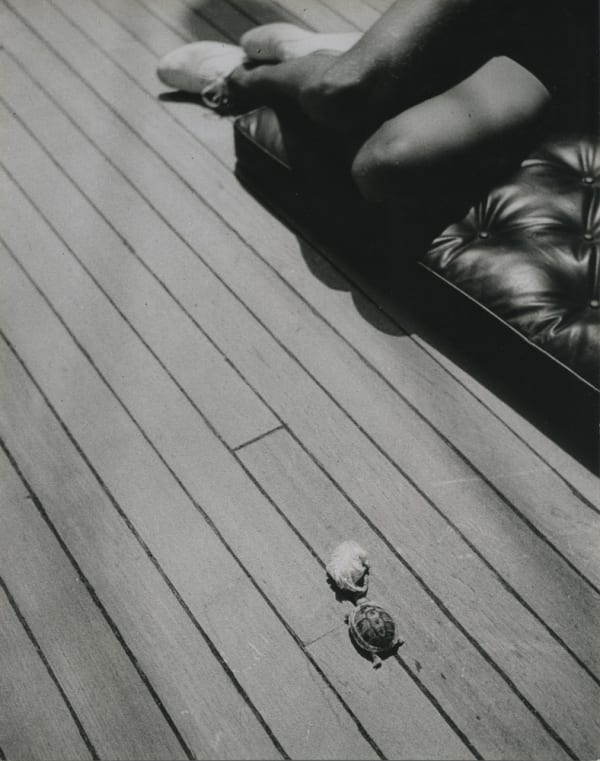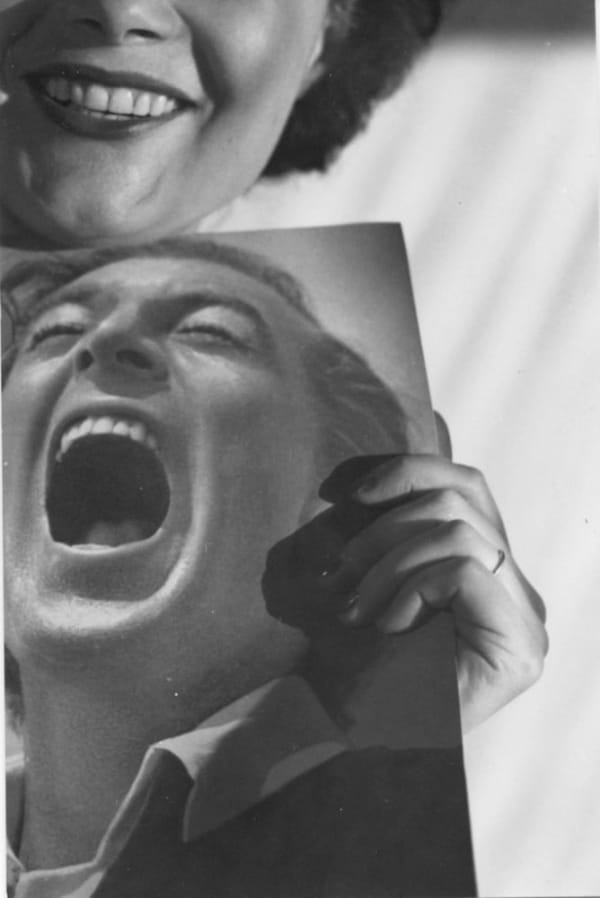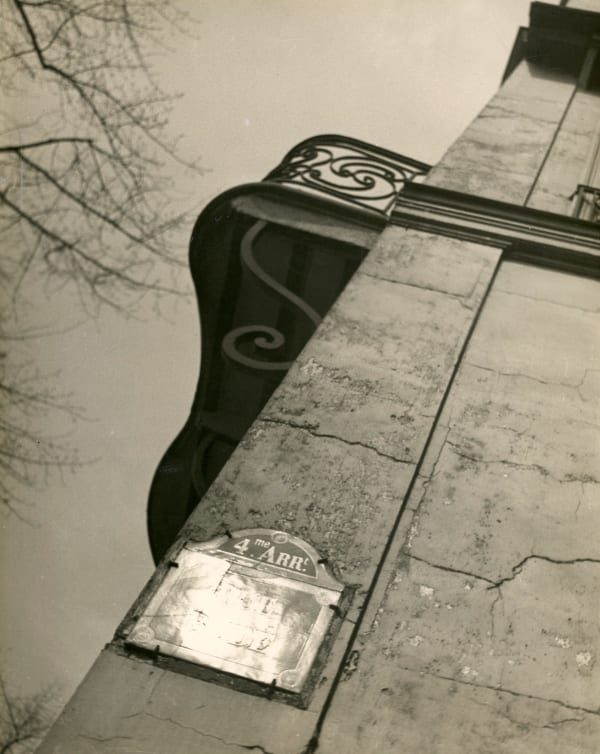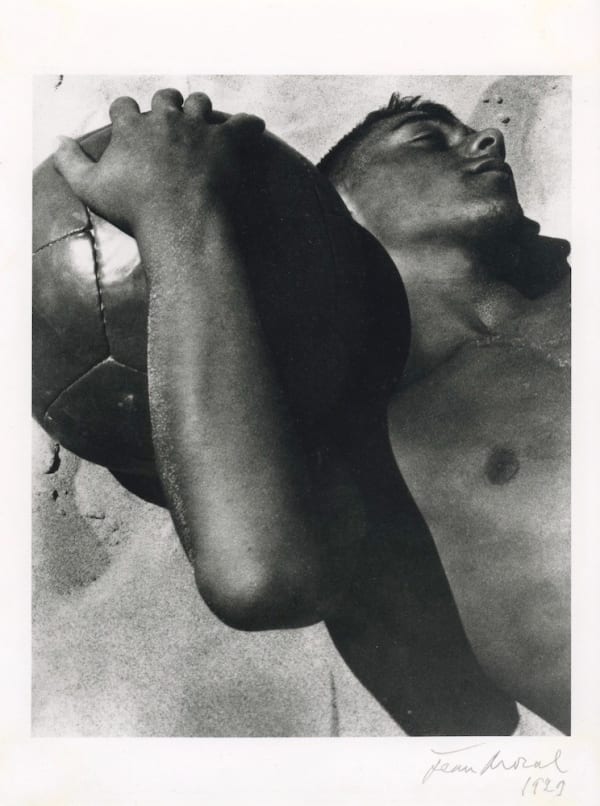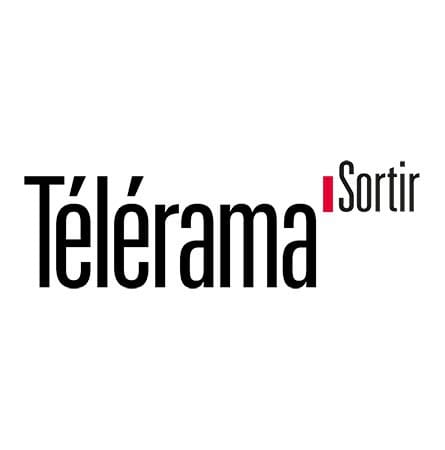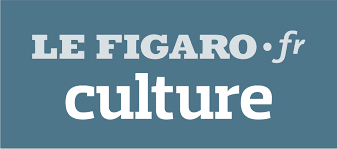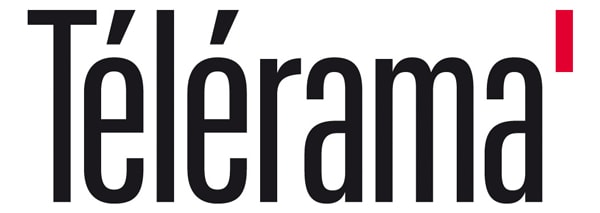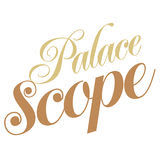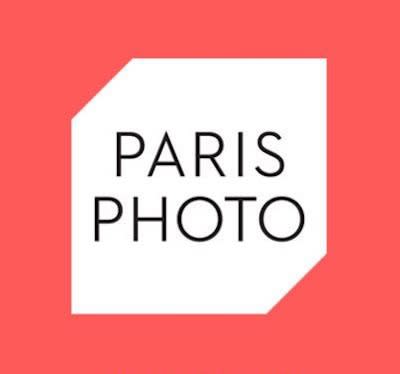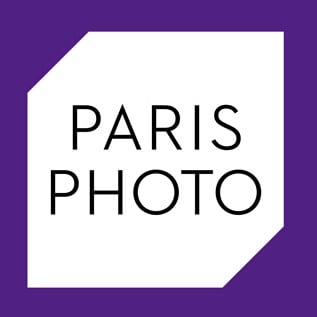Jean Moral French, 1906-1999
At his father's death, Jean Moral was placed in a boarding school, where he used his free time to draw. In 1925, at the age of seventeen, he discovered photography. he attempted to capture the places and people that were dear to him out of fear of losing them, the suffering of his childhood. Moral engaged in photography with a new eye and as an autodidact. According to his Daughter, "Jean Moral, a ward of the state following his father's death in 1914, was a tormented soul of incredible sensitivity... His vision could not but be one of a free world. He liked naturalness and immediacy. He framed almost all his prints in the heat of the viewfinder. The manufacturer Rolleiflex was not mistaken when it chose him, in its advertisements, as the model of the photographer of movement and direct shots"6.
Jean Moral, a wanderer with his Rolleiflex in easy reach always favoured outdoor photography. Low-angle shots, close-ups, experimental angles inhabit many of his photographs, for the subject is merely an excuse for the composition. For the first few years, in his laboratory, he worked on transforming his outdoor shots through solarisation and double exposure. His compositions were often created in the heat of the moment and rarely in the dark room. A man who loved fresh air, he was one of the first to put models on streets for fashion photography, playing with urban space to galvanise and bring the city's energy into the heart of a craft that until then had been carried out exclusively in a studio. His work was noticed by Carmel Snow, the high priestess of American fashion, making him the only French person under contract at Harper's Bazaar and allowing him to cover the Paris collections for the great fashion magazine for many years.
An avid sportsman and outdoor aficionado, like Boucher and Steiner, Moral developed his style in the shots of beaches, mountains, the DELIGNY swimming pool that would be published in Paris-Magazine for a decade.
In his shots, he aims for maximum expression by using unusual perspectives. They take over the world by photographing it in an unusual way: in three close-ups, disturbed by the counter-framing, in an aerial view, by the high-angle shot and the low-angle shot. He tightens the composition to the point where the limit becomes an essential internal element to the composition.
-
 Sans titre, c. 1932View more details
Sans titre, c. 1932View more details -
 Route, c. 1927View more details
Route, c. 1927View more details -
 Mode, 1935View more details
Mode, 1935View more details -
 La Seine, 1925View more details
La Seine, 1925View more details -
 Le cri, 1938View more details
Le cri, 1938View more details -
 Sans titre, rue Budé, 1929View more details
Sans titre, rue Budé, 1929View more details -
 Suzanne Talbot, n.d.View more details
Suzanne Talbot, n.d.View more details -
 Bubi, 1927View more details
Bubi, 1927View more details -
 Sans titre, 1929View more details
Sans titre, 1929View more details
Jean Moral arrived in Paris around 1926 or 1927, lodging with his friend Fabien Loris. After working briefly at the publishers Léon Ullmann, where he met Louis Caillaud, he was employed by the advertising workshop Claude Tolmer from 1928 to 1932 as a graphic designer, then as a photographer. There he met Alexey Brodovitch, Pierre Boucher and Pierre Verger. During this period, he took modernist pictures of Paris and its quays. In 1929, in the company of the young Austrian Bubi, he discovered the beaches of Lacanau where he photographed Juliette Bastide whom he married in 1931. Around 1935, he signed a contract with Harper's Bazaar for sixty fashion photos per year and collaborated with the magazine until 1952. After being called up during the Second World War, he left photography and began a career as a painter, a career he continued in Switzerland, where he moved in 1961.
He was part of several exhibits: Das Lichbild in Munich in 1930, the first International Salon of Nude Photography in 1933, The Photographic Image in France from Daguerre to the Present (1933), the Annual Group of Photographers at La Galerie de la Pléiade (1933-1935), and Document on Social Life (1936).
Collective Works
Daniel Masclet, Nus: La beauté de la femme (Album of the first International Salon of Nude Photography, self-published, 1933)
Marcel Natkin, Les grands courants de la photographie (Natkin, 1935)
Marcel Natkin, Photography and the Art of Seeing (London: The Fountain Press, 1935, 2nd edition 1948)
Reviews
Photographies d'Arts et Métiers Graphiques (1931-34,1936-39); Modern Photography (London: The Studio, 1931-37); Paris-Magazine, Harper's Bazaar, VU, Paris Match
-

L'éloge de la main
Frédérique Chapuis, Télérama Sortir, 24 May 2021 -

Visite virtuelle
Agathe Moreaux, Le Figaro Culture, 30 May 2019 -

La bascule du regard, Pierre Boucher, Jean Moral, André Steiner
Sophie Bernard, La Gazette Drouot, 24 May 2019 -

La bascule du regard
Frédérique Chapuis, Télérama Sortir, 8 May 2019
-

I want to see art
Homage to Christian Bouqueret (1950 - 2013) 1 December 2023 - 10 February 2024Françoise Morin and Les Douches la Galerie are pleased to invite you to the opening of the new collective exhibition, 'I want to see art', curated by Eric Rémy, on...Read more -

In Praise of the Hand
Group Show 11 March - 31 July 2021Les Douches la Galerie is pleased to present L’éloge de la main [In Praise of the Hand ], a collective exhibition crossing various movements that investigates the motif of the...Read more -

The Things of Life
Group show 23 January - 14 March 2020Les Douches la Galerie is pleased to present the group show The Things of Life, featuring works by Marcel Arthaud, Pierre Boucher, René Jacques, Jean Moral, Roger Parry, Jean Roubier,...Read more -

Staff picks
Group show 20 June - 27 July 2019This summer, from 20 June through 27 July, Les Douches la Galerie is pleased to present a selection of our favourite works by Berenice Abbott , Tom Arndt , John...Read more



